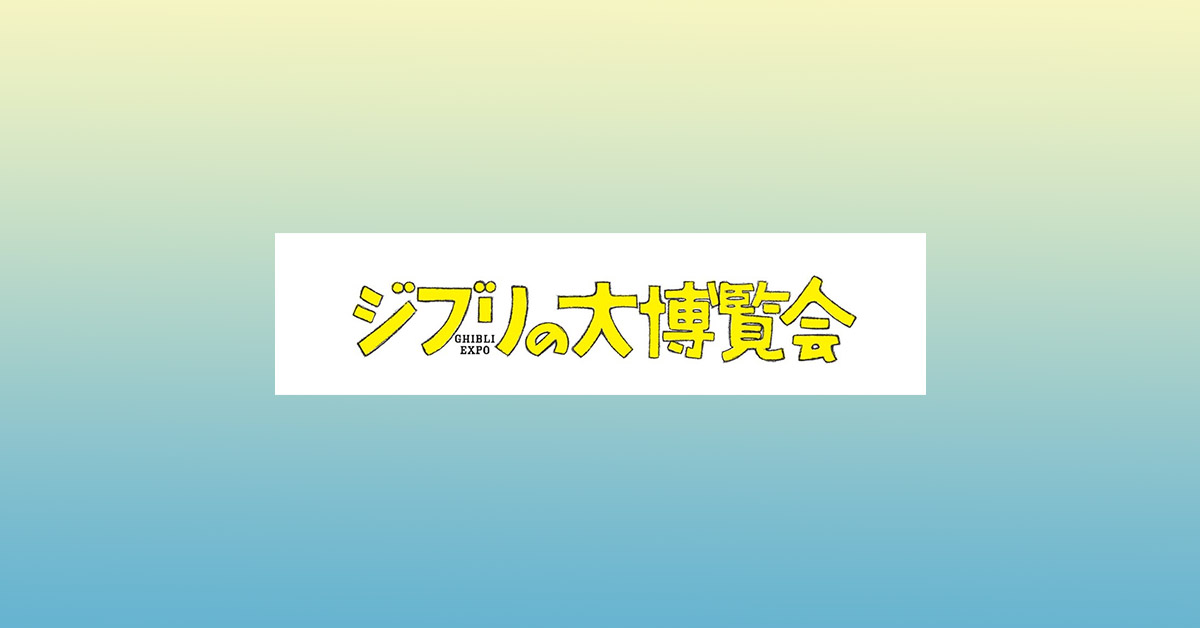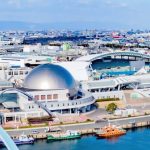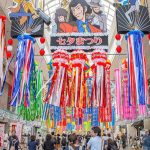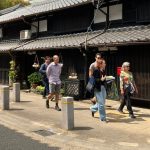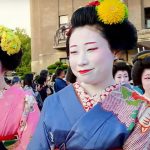Atsuta Shrine, also called, Atsuta-san or Atsuta-sama, is the second most important Shinto shrine in Japan, after the Ise Grand Shrine. The venerated sun goddess Amaterasu is enshrined here as well as being home to the sacred sword Kusanagi-no-tsurugi, which is one of the three Japanese imperial treasures. Legend has it that Amaterasu gave the sword to the first emperor of Japan and from it, he gained the right to rule. Please be aware that the sword is never shown to the public.
Atsuta Shrine is the second-largest shrine after the Ise Grand Shrine in Mie Prefecture and welcomes close to 10 million visitors a year. The shrine is particularly popular at New Year’s as visitors come for Hatsumode, the first visit to a temple or shrine of the year.
Located in the southern part of Nagoya, in the Atsuta district, the shrine complex covers 190,000 square meters and is home to numerous national treasures. If you are in Nagoya, this is a great place to visit and enjoy its peace and quiet, as well as the beautiful surroundings. Enjoy it as the first stop of a relaxing itinerary in Nagoya for body, mind, and soul.
Article Contents
A Brief History of Atsuta Jingu
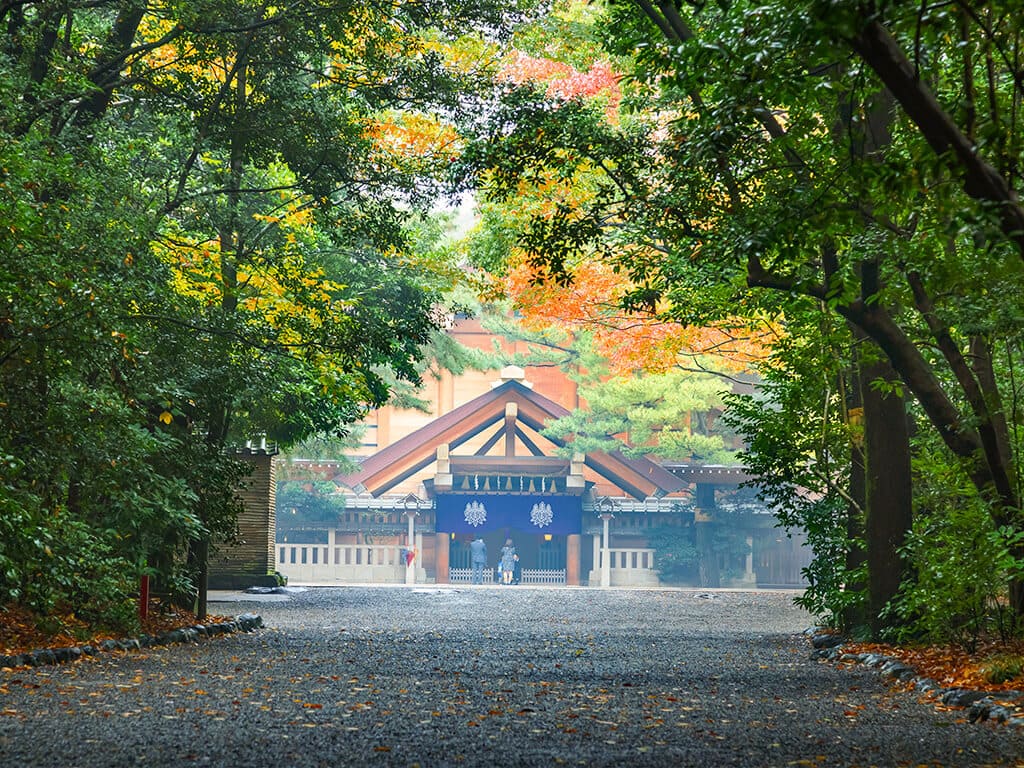
Atsuta Jingu is said to be almost 2000 years old. The story goes that in the 43rd year of Emperor Keiko’s reign (113 AD), Yamato Takeru, the prince, died, and his possessions, together with the sword Kusanagi, were placed in a shrine at the home of his widow. In the 51st year of Keiko’s reign, these relics were moved to the current location in Atsuta Shrine.
This story of the shrine’s founding was recorded in the oldest history books known in Japan today, the Kojiki and Nihonshoki, written respectively in 712 and 720 AD.
During the Meiji Period (1868 – 1912), the sanctuary was remodeled using the purely Japanese architecture style “Shinmei-zukuri”. Shinmei-zukuri is one of the three most important forms of traditional architectural style and is considered the pinnacle of Japanese traditional architecture.
The Best Sites to Visit at Atsuta Jingu
Nobunaga-Bei: A Symbol of Victory
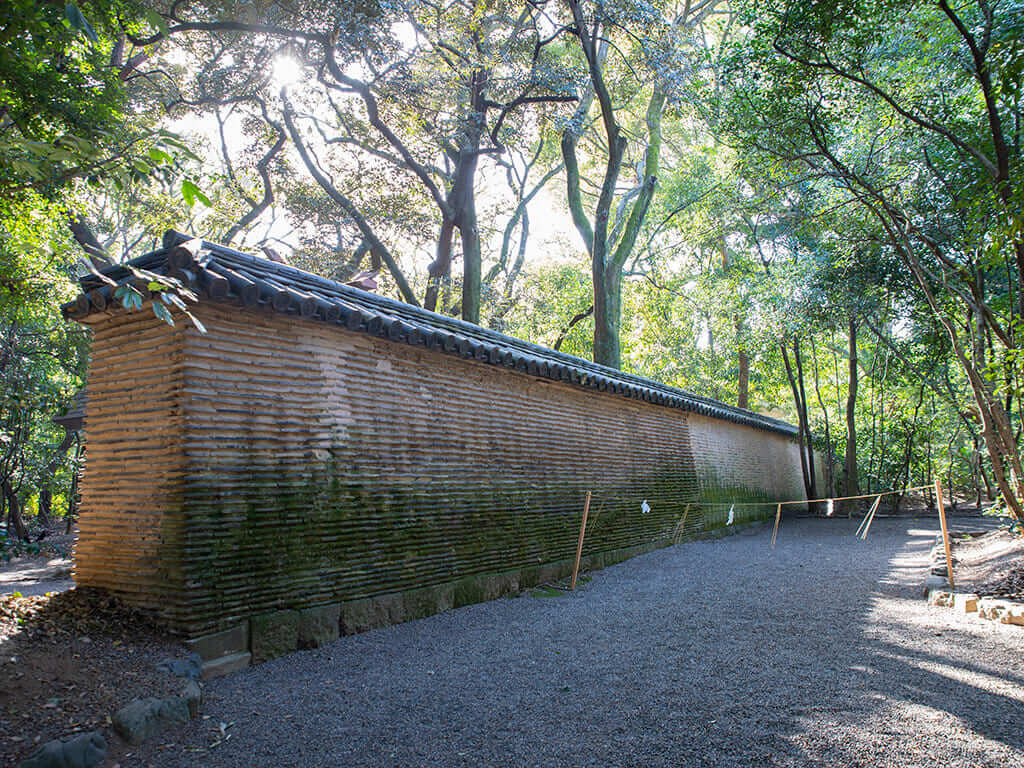
Within the shrine complex, there are several treasures, such as the Nobunaga-Bei wall, the oldest stone wall in Nagoya. It is said that before the Battle of Okehazama in 1560, the Shogun Oda Nobunaga prayed at this wall to obtain victory on the battlefield. When he won the battle, to show his gratitude, Oda Nobunaga donated the wall to Atsuta Shrine. The Battle of Okehazama is particularly well known in Japan, as Nobunaga defeated an army of 25,000 troops, even though his own army numbered only 2,500 troops, outnumbered 10 to 1!
Bunkaden: The Treasure Hall
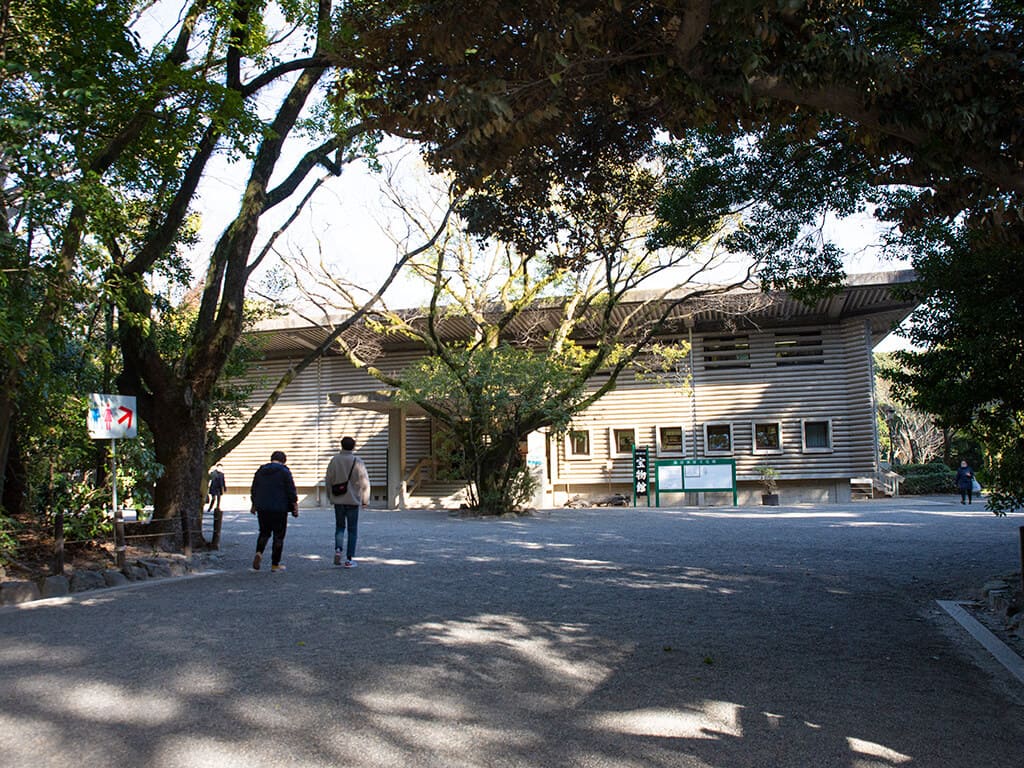
This museum houses around 4,000 items ranging from items used by common people to items used by the Imperial Family. With such a large collection it is impossible to display everything at the same time, so the displayed items are rotated every month. Bunkaden is famous for its large collection of swords and daggers.
Over 170 of the items in the museum have been designated as National Treasures or Important Cultural Properties of the Prefecture.
Bunkaden (宝物館)
Entry Fee: Adults: 500 yen, Elementary School Children: 200 yen. Combined admission tickets to Kusanagi Museum are available (Adults: 800 yen, Elementary and Junior High School Students: 300 yen).
Opening Hours: 9:00 – 16:30 (Closed the last Wednesday and Thursday of the month and December 25th-31st)
Website | Google Maps
Goshinboku: 1,000-Year-Old Tree
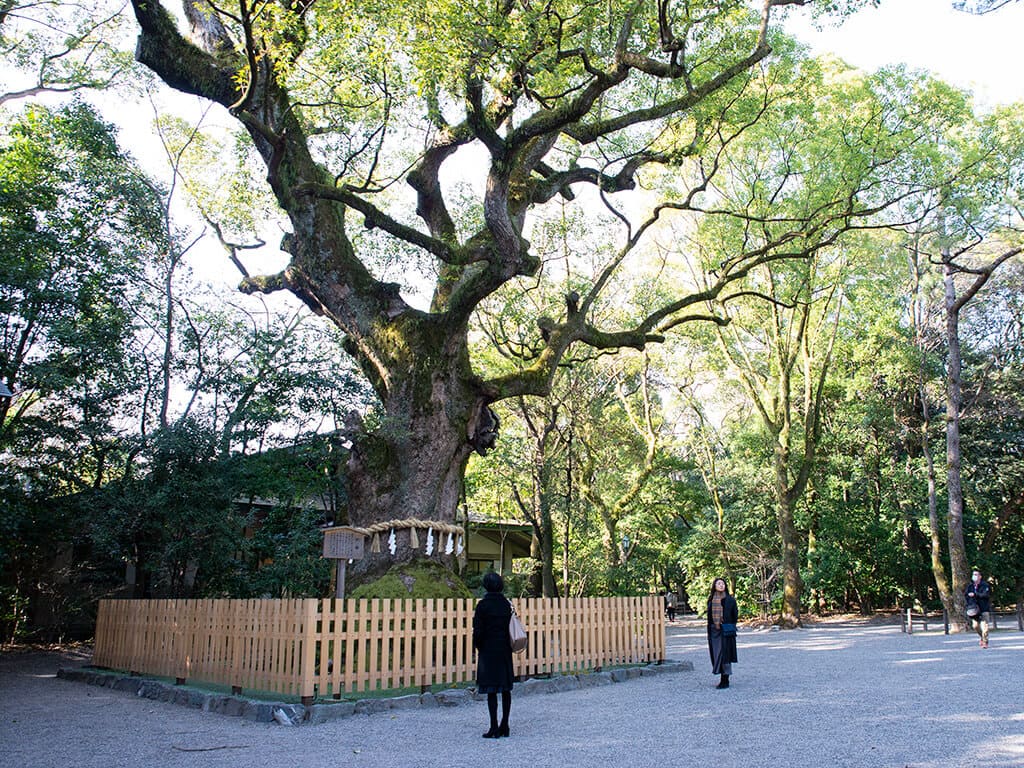
This sacred camphor tree (Cinnamomum camphora), is more than 1,000 years old. It is said to have been planted by Kukai Kobo Daishi, a famous Buddhist priest. It is believed that this tree emits power and many people who visit the Shrine will embrace the millennial tree to receive a bit of that power.
Kokoro no Komichi: The Pilgrimage Path
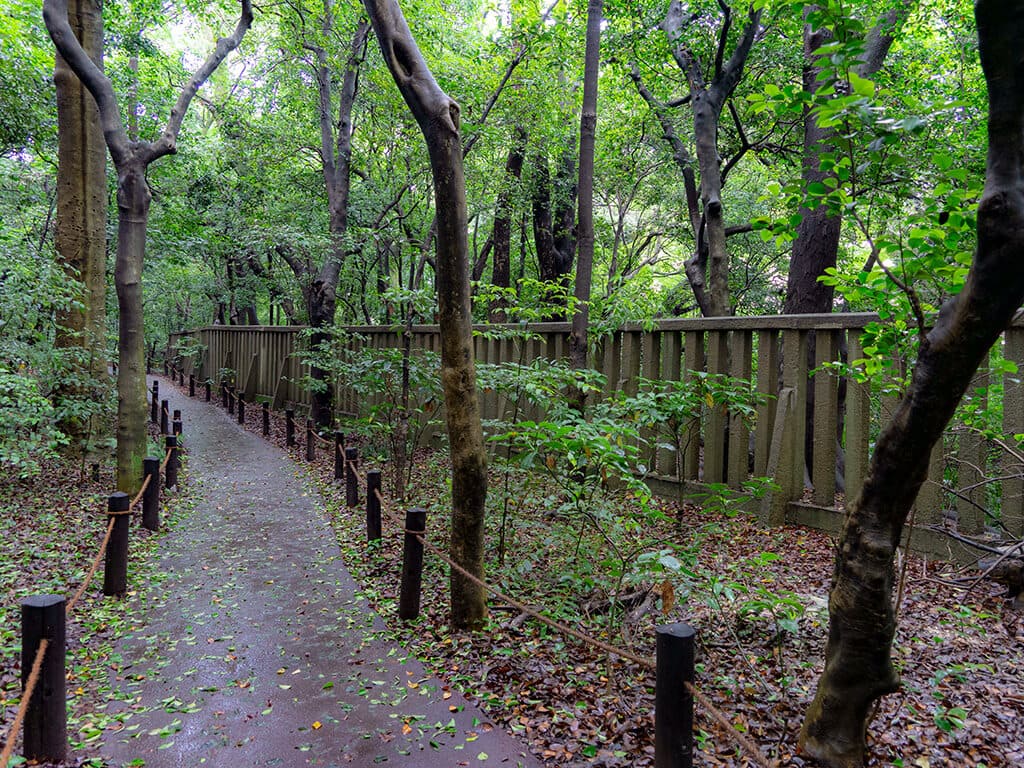
Atsuta Jingu includes a little pilgrimage path leading through the forest and passing different sacred places along the way. You can stop and make a wish at each one by throwing a coin in the donation box, putting your hands together in prayer, closing your eyes, and bowing your head respectfully while making your wish to the kami (a Shinto god).
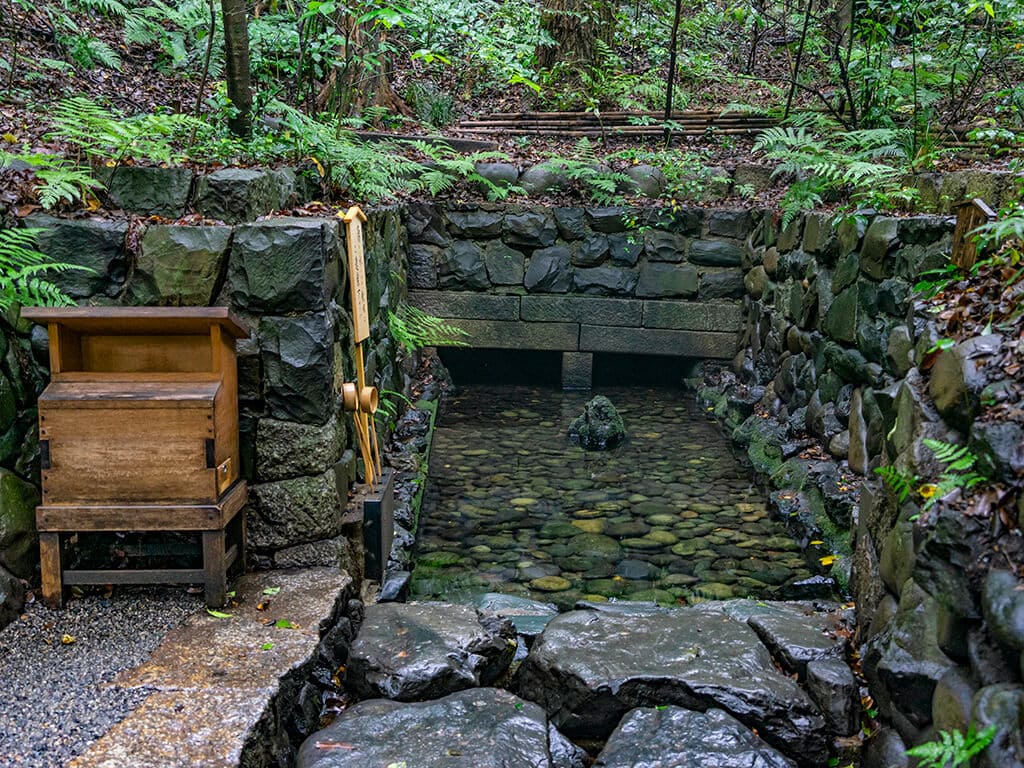
The path leading through the forest is the holiest place at Atsuta Jingu and the sign at the entrance asks you to be silent and respectful.
Hongu: The Main Shrine
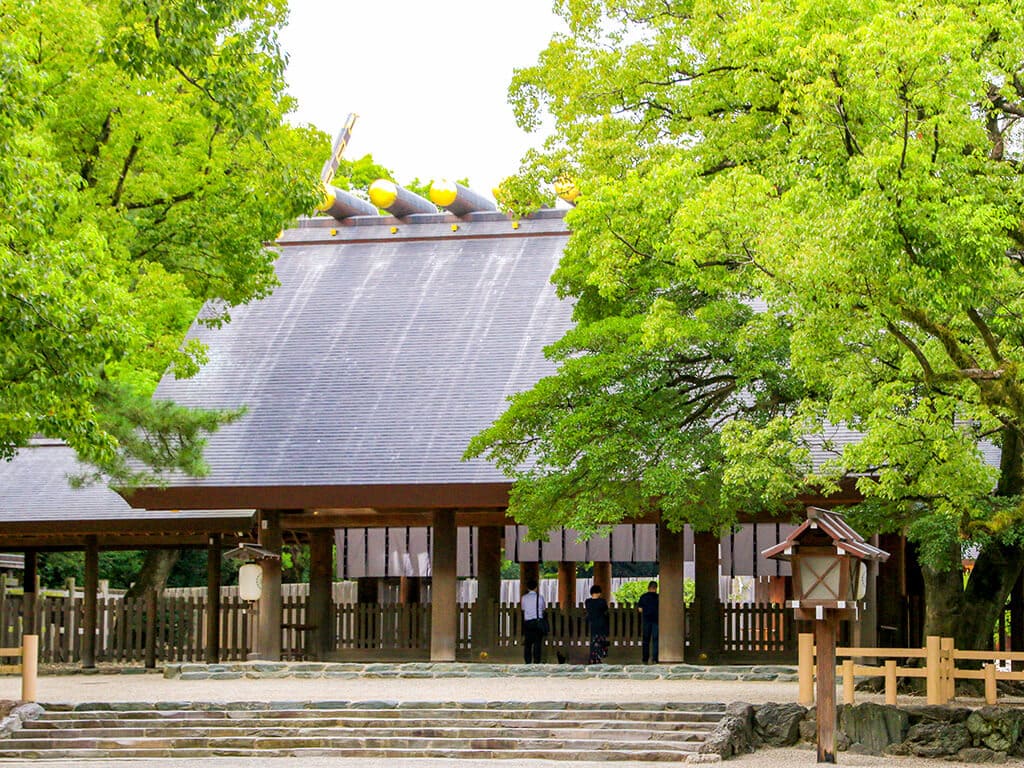
As with many Japanese shrines, it is not possible to directly access the central shrine, but people still come to pray, leave offerings, and make wishes. This main shrine is where the sun goddess Amaterasu is enshrined. It is also supposedly where the sacred sword Kusanagi-no-tsurugi is stored. However, the sword is never shown to the public. In fact, due to its divinity and Shinto tradition, no one is ever allowed to look upon the sword Kusanagi-no-tsurugi. When you visit Atsuta Jingu, you can decide for yourself whether you believe the sword is truly stored there or not.
Kusanagi Museum: A Treasure Trove of Swords
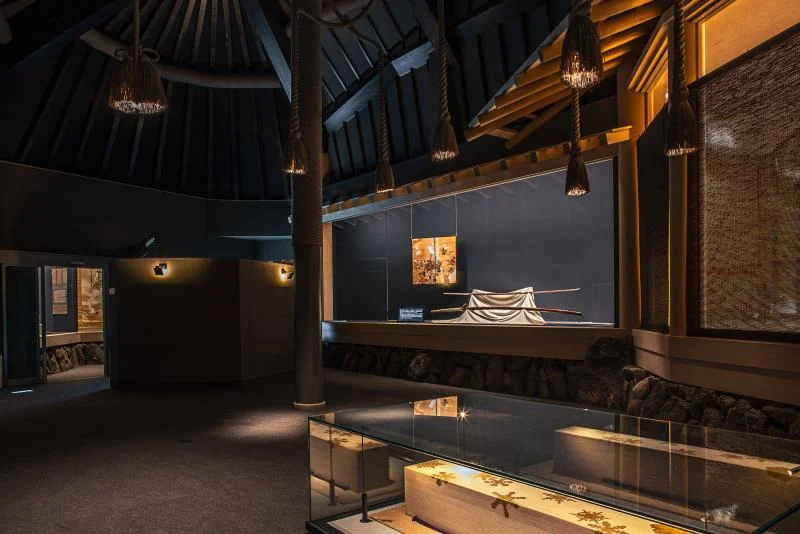
The history of Atsuta Shrine begins with the enshrinement of the Kusanagi sword. Therefore, it comes as no surprise that swords have been consistently offered with prayers to the shrine for centuries. Even nowadays, the act of presenting swords from all over the world reflects a deep reverence for Atsuta Jingū.
Recently opened in late 2021, the Kusanagi Museum is designed as a special display hall to showcase the impressive collection of more than 450 swords that Atsuta Shrine has amassed over the years. Among them are 20 swords designated as national treasures and important cultural properties, along with 12 swords designated as cultural properties by Aichi Prefecture.
In addition to the swords, the museum also exhibits paintings and historical documents related to swords, as well as an experience corner featuring a genuine sword replicated in size and weight for visitors to touch and feel.
Kusanagi Museum (熱田神宮 草薙館(剣の宝庫))
Entry Fee: Adults: 500 yen, Elementary and Junior High School Students: 200 yen. Combined admission tickets to Treasure Hall are available (Adults: 800 yen, Elementary and Junior High School Students: 300 yen).
Opening Hours: 9:00 – 16:30 (Closed the last Wednesday and Thursday of the month and December 25th-31st)
Google Maps
Kusanagi Plaza: A Place to Relax
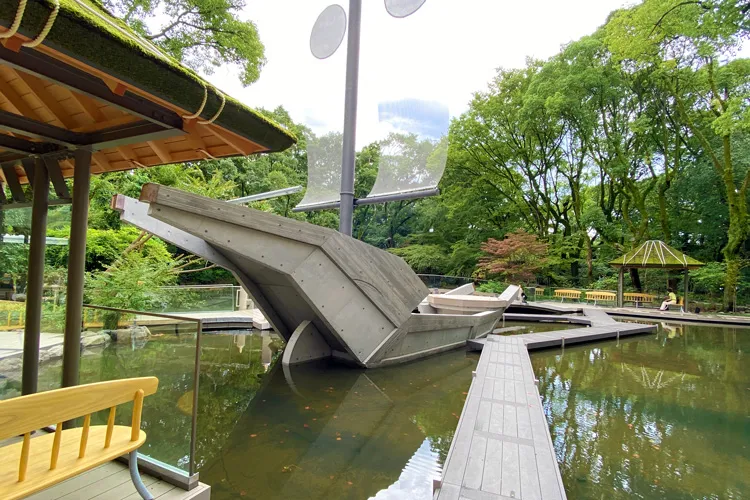
Kusanagi Plaza, right next to the Kusanagi Museum, invites visitors to relax after exploring the grounds and museums of Atsuta Shrine. Opened in July 2021, the plaza features a Kishimen restaurant (see more below), a souvenir shop, and a garden centered around Minamijin pond. Amidst floating boats and benches, guests can unwind and enjoy the tranquil atmosphere, while kids have fun splashing around in the water. Whether by the water’s edge or in the secluded gazebo, Kusanagi Plaza offers a peaceful way to cap your visit to Nagoya’s most impressive shrine.
Celebrations at Atsuta Shrine Throughout the Year
While enjoying your time at Atsuta Jingu, don’t be surprised if you come across a wedding party. This is a very popular location for wedding ceremonies.
Atsuta Shrine holds a large number of festivals throughout the year both large and small. Here are some of the most popular ones:
Hatsu-Ebisu Festival
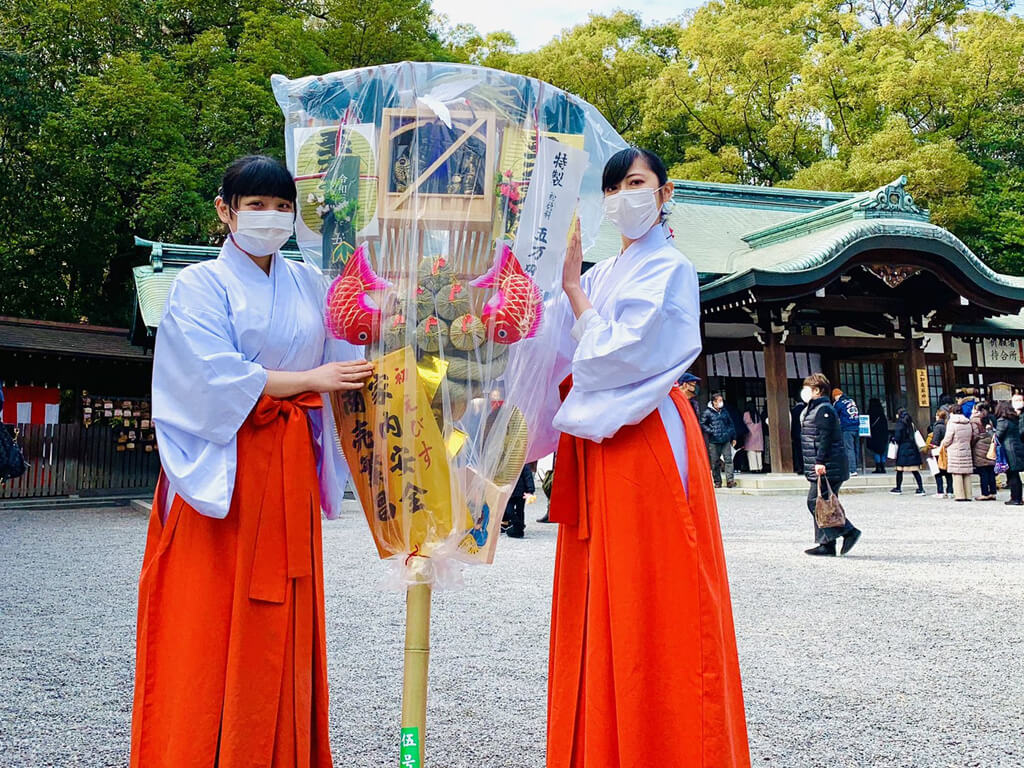
This festival celebrates business prosperity, family safety, and success in fishing and agriculture. Starting at midnight on January 5th, visitors at the shrine buy a lucky rake called “fuku-kumade”. The rake is used to rake in good luck in the New Year.
Honensai Festival
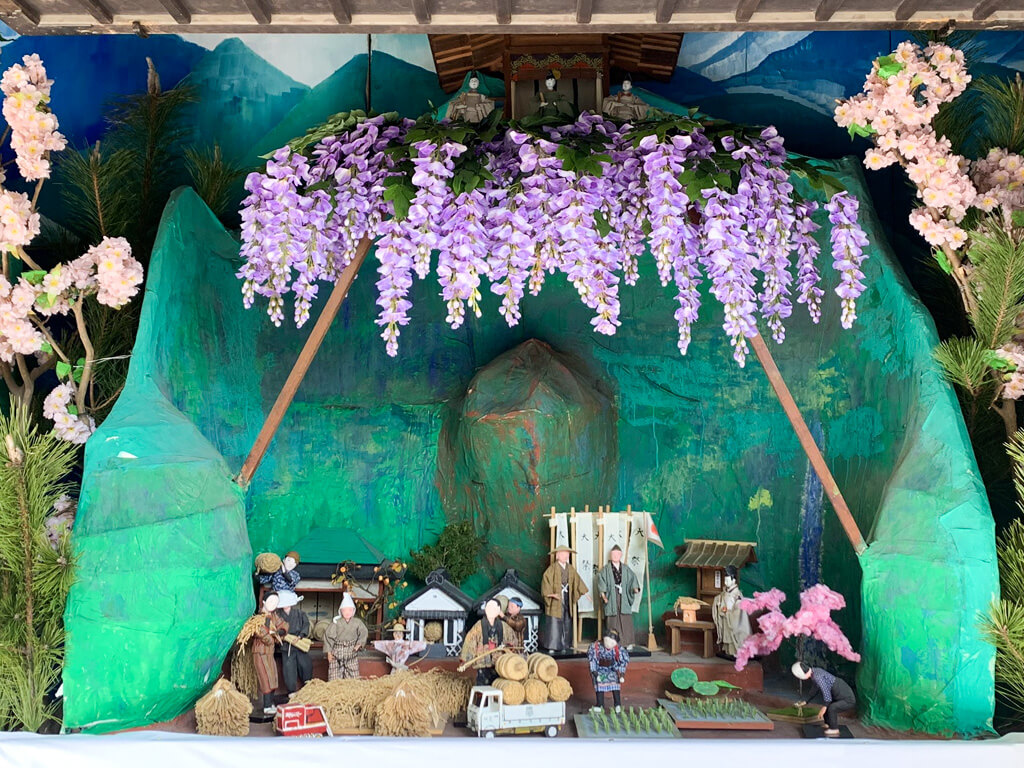
Held annually on May 8th, the Honensai Festival features priests displaying handmade dioramas of crops and rice fields, attracting people who come to pray for a successful harvest. Throughout the festival, pop-up stands sell plants and crafts.
Bugaku Shinji
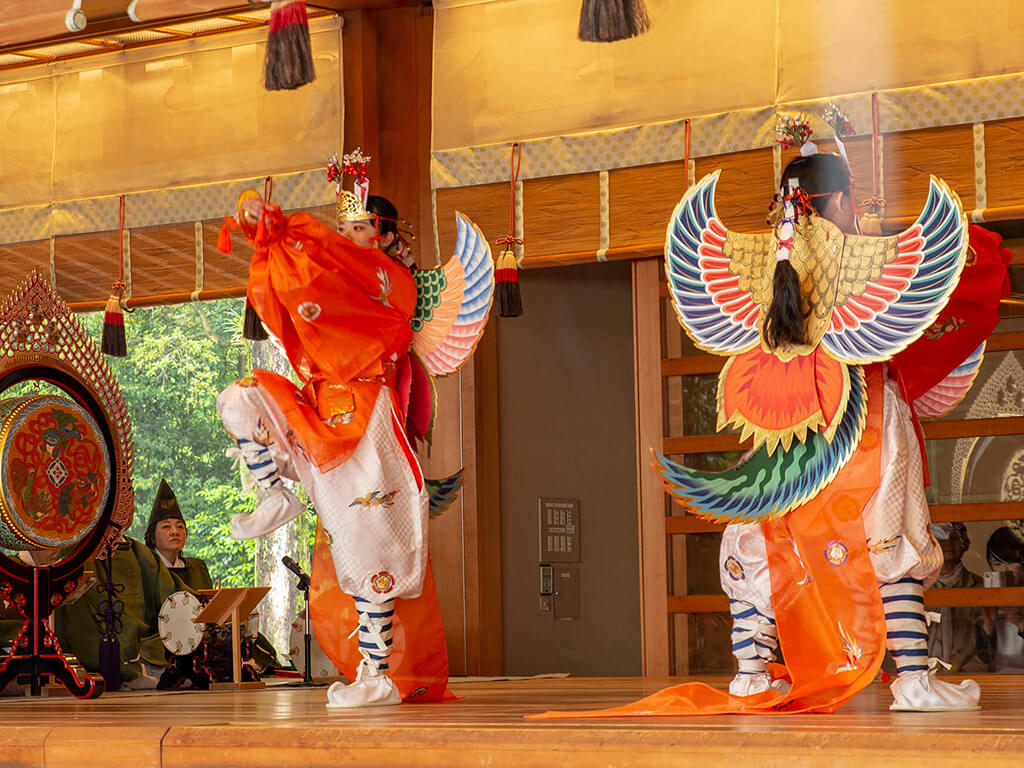
The Atsuta Jingu holds its Bugaku Shinji annually on May 1st. Bugaku Shinji is an ancient court dance that originated during the Heian Period (794-1185). “Bugaku” refers to music and dance, while “Shinji” denotes a Shinto ritual. This type of dance is characterized by slow and precise movements. The music, known as Gagaku, and the dance choreography are repeated several times. Dancers wear vibrant Buddhist costumes, and sometimes masks. The dance is performed outdoors on a red-painted stage.
It is truly astonishing that, despite the passage of time and the flourishing of modern Japanese culture, this dance has survived to the present day.
Atsuta Festival
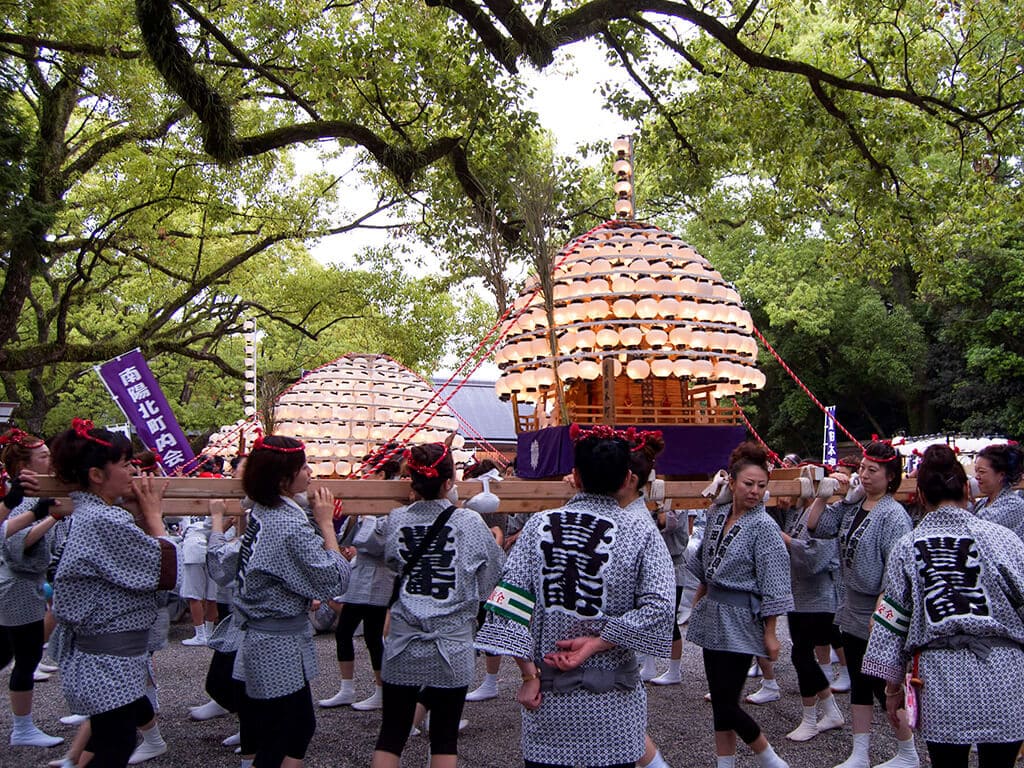
Every June 5th, Atsuta Shrine hosts the Atsuta Festival to mark the beginning of summer. The festival is one of the largest in Nagoya and, in fact, all of central Japan, and includes food stalls, traditional performances, and fireworks.
For more information on the largest and most famous festival at Atsuta Jingu please see our full article on the Atsuta Festival!
Where to Eat at Atsuta Jingu
Hitsumabushi Horaiken
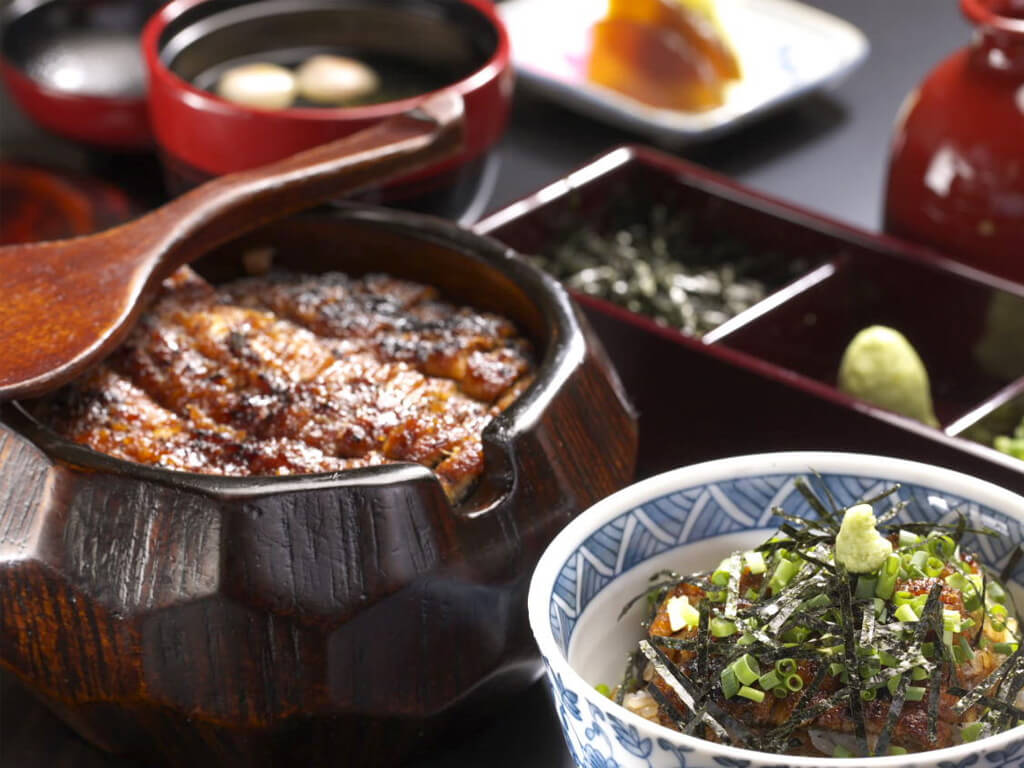
Horaiken is a restaurant with a long tradition and is widely popular with the locals. The restaurant has multiple branches all over Nagoya, and they all draw long lines during lunch and dinner times.
Hitsumabushi is a unique way to eat Japanese eel that was originally developed here in Nagoya. For more information on Hitsumabushi please see our separate article that dives into it and explains what it is and how to enjoy it!
Hitsumabushi Horaiken – Atsuta Horaiken Jingu (あつた蓬莱軒 神宮店)
Opening Hours: 11:30 – 14:30 and 16:30 – 20:30. Closed every Tuesday and the 2nd and 4th Monday of the month.
Address: 2-10-26 Jingu, Atsuta Ward, Nagoya, Aichi 456-0031
Website (Japanese only) | Google Maps
Another option to enjoy Hitsumabushi and other fantastic food options is joining our Specialties of Nagoya Food Tour. Click on the banner below to book now!
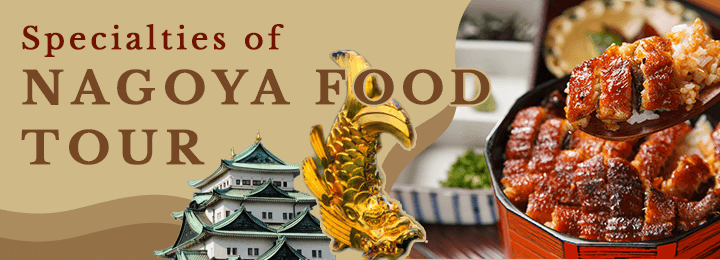
Miya Kishimen
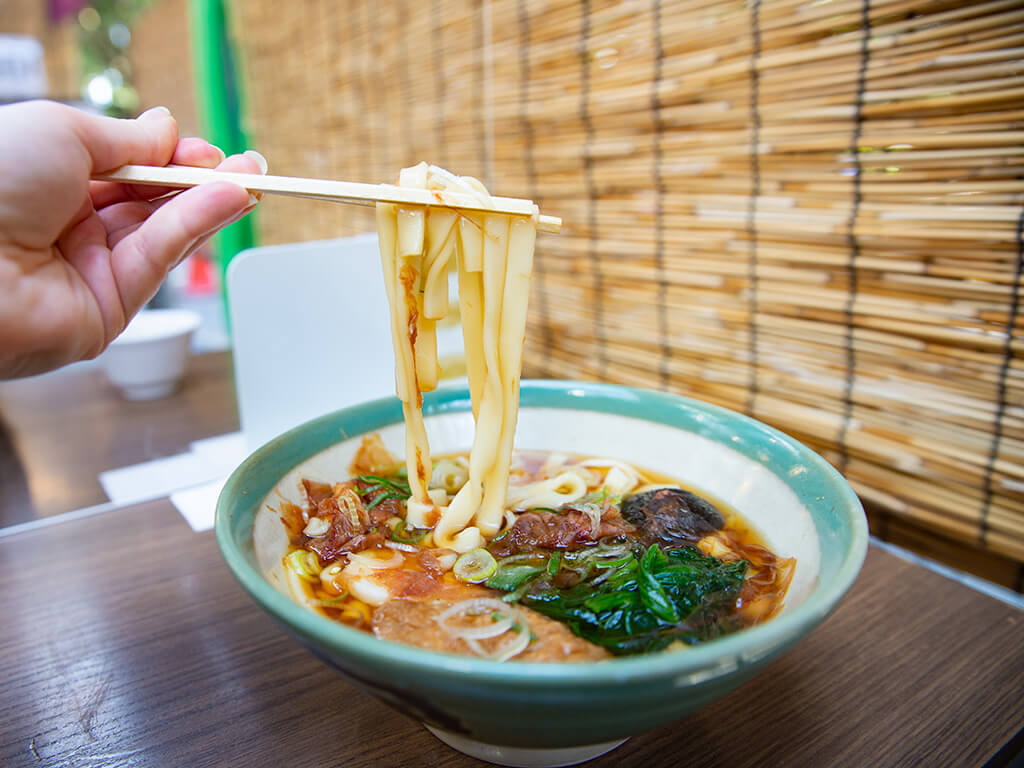
Kishimen are broad, thick wheat flour noodles very similar to Udon. Due to their different shape, the noodles have a shorter cooking time and a distinct texture when eaten. Kishimen can be found mainly in Nagoya and its surroundings.
Miya Kishimen is a famous Kishimen restaurant with multiple branches in Nagoya. The Jingu branch is located inside the grounds of Atsuta Jingu, making it a great option for lunch.
Miya Kishimen – Jingu Branch (宮きしめん 神宮店)
Opening Hours: 9:00 – 16:30
Address: 1-1-1 Jingu, Atsuta Ward, Nagoya, Aichi 456-0031
Website (Japanese only) | Google Maps
This post was last updated in April 2024.
Although we strive to provide you with the most accurate and up-to-date information possible, please note that changes may occur nonetheless. We recommend you confirm any relevant information such as event cancelations or changes, opening hours, or possible restrictions using a direct source. Please keep in mind that these sources might be in Japanese only.
Did you enjoy this article?
Make sure to also check out our other posts about Nagoya and trust us if we say Nagoya is not boring!
Be sure to follow us on Facebook for regular updates on Nagoya, and see our Instagram for pictures and stories about the city!
Tag us 📲
If you have visited Atsuta Jingu, please share your experience and tag us on social media with #nagoyaisnotboring

